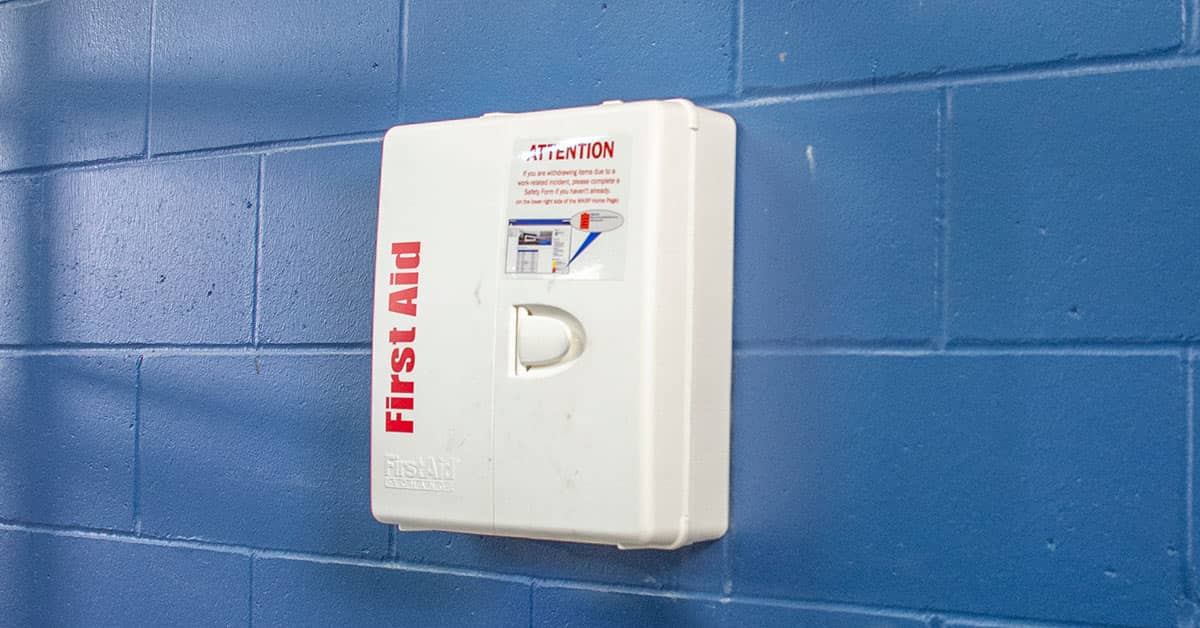Common questions on first aid kits and training
Date Posted: 05/10/2021

Nearly every workplace has a first aid kit, but OSHA’s standard is only a few sentences, so it raises a lot of questions. Below are answers to some common questions about first aid supplies and training.
Kit contents and location
OSHA suggests using ANSI Z308.1 Minimum Requirements for Workplace First Aid Kits as a guide, but it isn’t mandatory. It provides lists for two kits: Class A kits contain basic items for common injuries, and Class B kits are intended for more complex or high-risk workplaces. Larger operations may need additional equipment or supplies. OSHA does not require physician approval of supplies, but some states do. For instance, Cal/OSHA requires that supplies beyond a basic list be selected “in accordance with the documented recommendations of an employer-authorized, licensed physician.”
Employers must determine how many kits are needed. The standard requires that “adequate” supplies be “readily available,” and a Letter of Interpretation suggests a 3-4 minute response time. Employees should not need to travel through several doorways, hallways, and/or stairways to find first aid supplies.
OTC medications
OSHA does not address over-the-counter (OTC) medications, but if a kit includes OTC drugs, the ANSI standard says they should be in a single dose, tamper-evident packaging and should not contain ingredients known to cause drowsiness. Due to liability concerns, some employers don’t include medications, or only offer them through a vending machine. Liability laws differ by state, so employers may want to consult a legal professional.
Expired items
OSHA doesn’t address expired items, but the ANSI standard advises removing and replacing any expired items. State health regulations might also require this. OSHA suggests that one person be responsibility for tracking and maintaining the supplies.
Locking cabinets
If employees take supplies for personal use, employers might think about locking the cabinet. In a Letter of Interpretation, OSHA said that cabinets may be locked, but if someone with a key cannot be found when needed, the supplies are not “readily accessible.” Employers might provide keys to several individuals and let employees know who has a key.
Refresher training
First aid training should be repeated periodically. OSHA does not require CPR training unless a specific standard requires it, but CPR is usually part of first aid training. For CPR skills, the American Heart Association encourages practice sessions at least every six months. Training should also cover AEDs if they are provided. OSHA advises employers to consider AEDs, but each employer should evaluate the potential need for an AED, consider state and local laws, and consult with a physician if needed.
How Safety Management Suite Can Help
The regulations don’t provide all the answers you need to stay in compliance, but other guidance documents may have those answers. Instead of digging for answers, send your questions to our experts using the Expert Help link conveniently found on the top of the home page for J. J. Keller® SAFETY MANAGEMENT SUITE. We’ll do the research for you, and you’ll get a response within one business day.
E-mail Newsletter
Sign up to receive the weekly EHS Insider email newsletter for safety articles, news headlines, regulatory alerts, industry events, webcasts, and more.